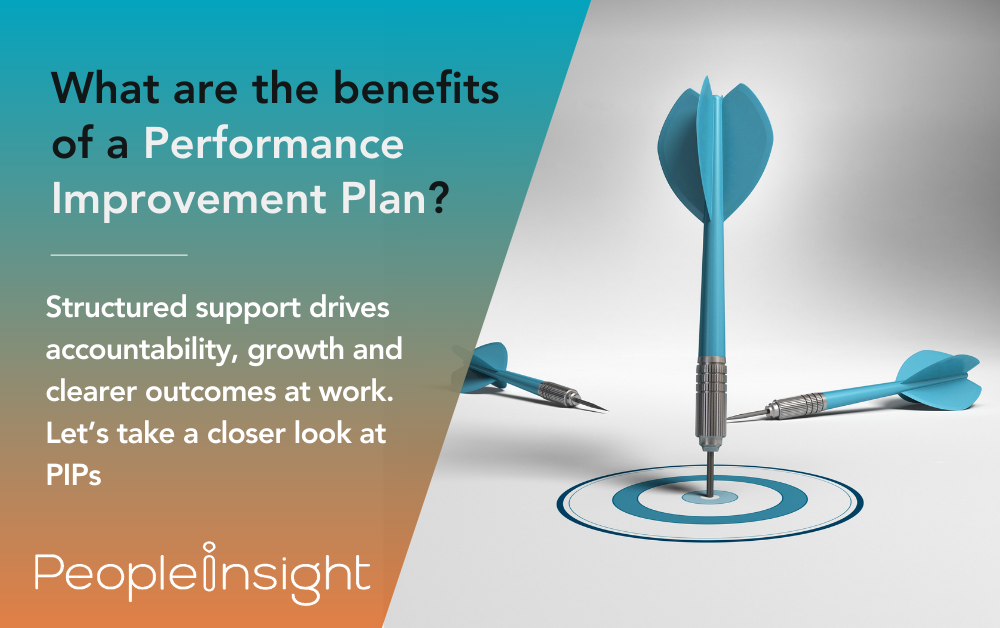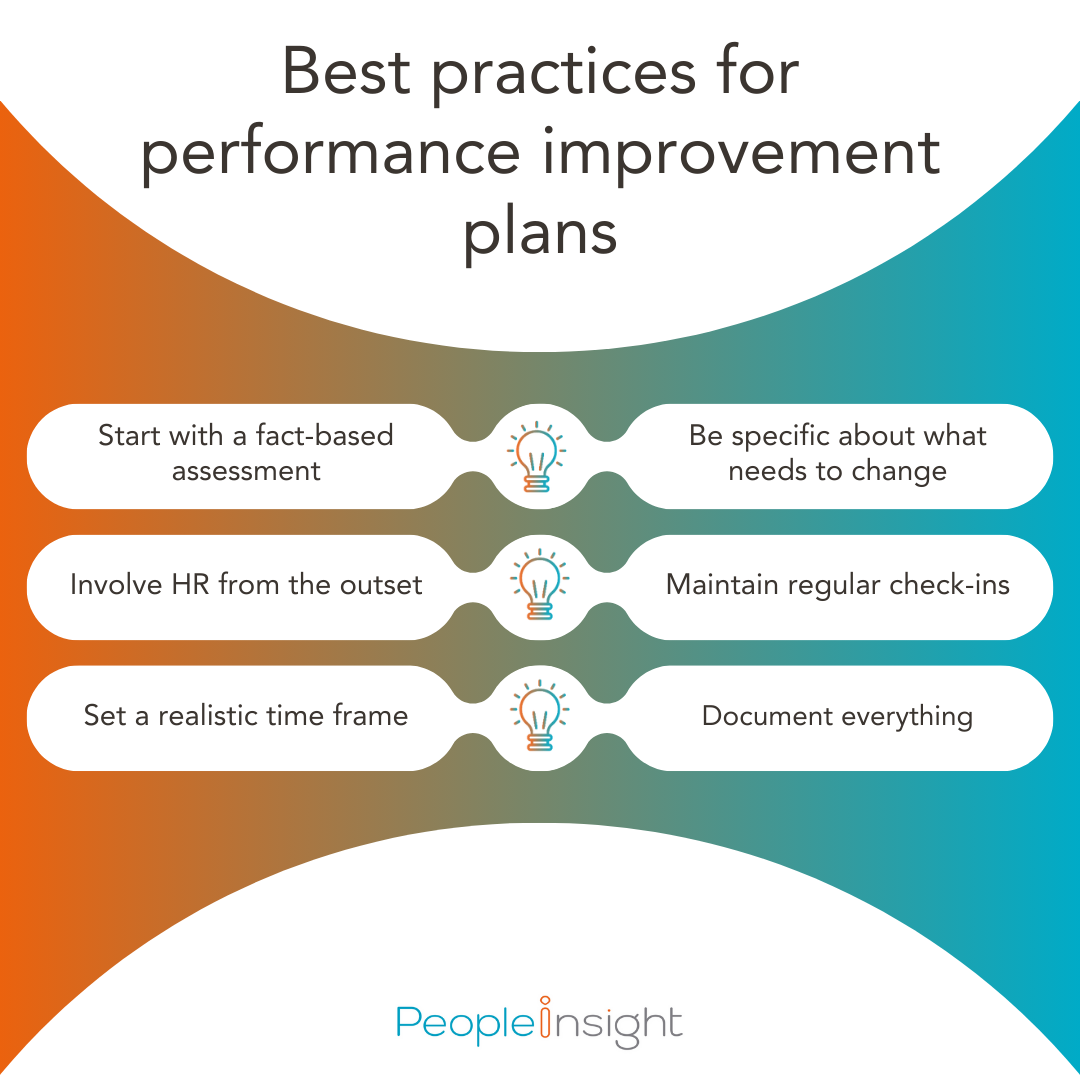
Low performance is rarely just about capability. Often, it’s a signal that support, expectations or communication are out of sync. At times like this, a considered approach is needed to show employees that you are there for them, you want them to improve and you’ll give them what they need to do so. Enter the Performance Improvement Plan (PIP).
A PIP represents a real opportunity to reconnect employee output with business goals, clarify standards and offer practical guidance.
When used effectively, a performance improvement plan can shift an employee’s trajectory, reinforce a culture of accountability and reduce costly turnover — what’s not to love?
On the flip side of the coin, however, it’s worth noting that poorly executed plans can feel punitive, leading to further disengagement or claims of unfair treatment. Getting the structure, timing and tone right makes all the difference.
Let’s take some time to explore the benefits of a performance improvement plan in depth and outline the best practices organisations should follow in 2025.
Related: 50 Employee engagement statistics you need to know
Performance Improvement Plans are formal documents used to address an employee’s underperformance through targeted objectives and timeframes. The process helps leaders to have constructive, structured conversations, set measurable goals and give employees the tools they need to improve.
With clear documentation and regular check-ins, PIPs can reduce ambiguity and support managers in handling performance challenges fairly and consistently.
Related: How to revamp your performance management process
Below are just a few reasons why a PIP can make a real difference to your organisation.

One of the main benefits of a performance improvement plan is that it promotes ownership. Rather than leaving managers and HR to carry the burden of underperformance, the process shifts some responsibility back to the employee. When expectations and timelines are clearly laid out, it becomes easier for employees to take action and understand where they stand.
PIPs aren’t just corrective; they can also be developmental. By identifying gaps in skills or knowledge, the plan can open up access to relevant training, coaching or peer support. This improves the likelihood of long-term success and helps individuals stay engaged.
Related: How to boost employee engagement
One of the less obvious but important benefits of a performance improvement plan is that it facilitates better dialogue. During the review period, employees and managers meet regularly to assess progress and make adjustments. These conversations help to identify wider issues, such as poor processes, unclear delegation or unrealistic workloads. These issues might be contributing to performance issues, and this employee insight is incredibly valuable. When these factors are surfaced early, they can be addressed without escalation.
Related: How to improve the employer employee relationship
If an employee’s performance doesn’t improve and termination becomes necessary, having a documented and fair process in place is incredibly helpful. Employment tribunals in the UK look for evidence that employers have made reasonable efforts to support employees before dismissal.
Unfair dismissal can be incredibly costly — not to mention the reputational damage or morale impacts on the wider team. A well-executed PIP can demonstrate that the organisation acted fairly, reducing this risk.
When done well, a performance improvement plan doesn’t just focus on short-term fixes. It helps employees see how their contributions fit into the wider picture. This connection is a strong motivator, especially when it comes with achievable goals and direct feedback.
Making that link can also help line managers be more strategic. If the employee cannot meet performance goals even with support, it may signal a need to restructure the role or revisit team priorities.
Replacing an employee is expensive. The average cost of replacing an employee in the UK currently sits at around £25,000. One of the benefits of a performance improvement plan is that it gives organisations the chance to retain staff rather than default to dismissal.
With the right approach, employees who go through a PIP often return to full performance and may even exceed previous standards. The result? You get to keep experienced staff who understand the business reduces disruption and builds long-term value.
Now let’s look at best practices for implementing a successful PIP.

The foundation of any good PIP is objective data. Use performance metrics, feedback and evidence of missed targets — not assumptions or hearsay. This protects against bias and creates a shared reference point for improvement.
Avoid vague language. If an employee is missing deadlines, specify how often and by how much. If quality of work is a concern, refer to concrete examples. Clarity helps employees know what success looks like and gives them a fair chance to meet expectations.
PIPs can raise legal and emotional stakes, so it’s important to have HR involved early. Their guidance can ensure the plan meets legal standards and reflects organisational values, especially if adjustments are needed for disability, neurodiversity or mental health reasons.
Don’t leave the employee to interpret the plan alone. Weekly or fortnightly reviews can keep the process on track, allow for early feedback and prevent misunderstandings.
Most PIPs run for 30, 60 or 90 days depending on the issues involved. Too short, and the employee may not have enough time to improve. Too long, and it risks feeling drawn out and demoralising. Choose a timeframe that allows meaningful change without prolonging uncertainty.
Every meeting, adjustment and feedback point should be recorded. This not only provides protection in the event of disputes but also helps track progress clearly and fairly.
When used well, the benefits of a performance improvement plan go far beyond compliance. They support clarity, encourage growth and give employees a real chance to improve. But the way a PIP is introduced and managed matters.
Employee listening plays a key role here. Through pulse surveys, manager feedback and wellbeing checks, organisations can spot performance issues earlier and respond with context, empathy and insight rather than one-size-fits-all plans.
Looking to support employee performance with deeper insight? Talk to us about how People Insight’s employee surveys can help you spot early signs of disengagement, clarify expectations and take action before performance dips.
